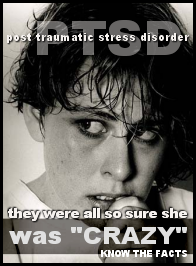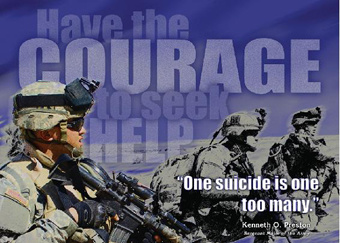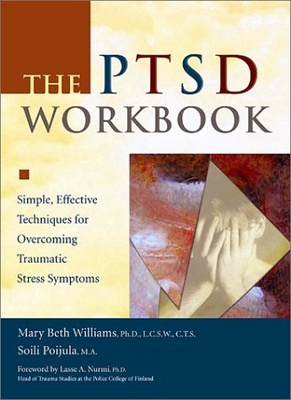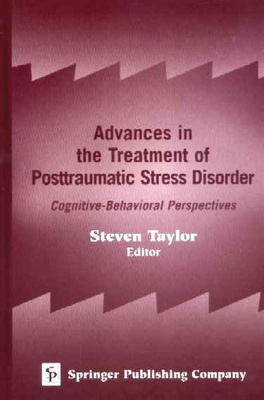![]() This is a compliment to Gordon Duff’s story on A CHALLENGE TO "NEOCON" PTSD DENIALISTS Posted on July 10, 2009
This is a compliment to Gordon Duff’s story on A CHALLENGE TO "NEOCON" PTSD DENIALISTS Posted on July 10, 2009
Click on the PTSD Newsladder above for more articles and commentary on PTSD by 21st Century THINKERS.
Though when we in the Veterans and Military Family community discuss  PTSD in terms of our troops and families that carry the burdens of war for the rest of the nation, PTSD as a recognized medical diagnosis was first brought to public attention by Vietnam War veterans. It wasn’t until the diagnosis was recognized by the Veterans Administration after Vietnam that its implications spread throughout the rest of American Society. The Armed Forces has led the way in technological advancements, and social reform sometimes way ahead of the rest of our society. PTSD is an example of how the stress of combat, family loss, wounds, and disabilities as a result of war blazed the way for a wide spread understanding of what causes PTSD. However myths still surround PTSD that do much to contribute to the stigma associated with PTSD.
PTSD in terms of our troops and families that carry the burdens of war for the rest of the nation, PTSD as a recognized medical diagnosis was first brought to public attention by Vietnam War veterans. It wasn’t until the diagnosis was recognized by the Veterans Administration after Vietnam that its implications spread throughout the rest of American Society. The Armed Forces has led the way in technological advancements, and social reform sometimes way ahead of the rest of our society. PTSD is an example of how the stress of combat, family loss, wounds, and disabilities as a result of war blazed the way for a wide spread understanding of what causes PTSD. However myths still surround PTSD that do much to contribute to the stigma associated with PTSD.
We at VT News Network decided to do a series on PTSD using data and materials from the National Institute of Mental Health (NIMH). However, there remains a Secret of NIMN, there has yet to be a definitive study or stand taken by NIMN on the impact of never ending deployments of the same people to combat zones leading to an aggravating PTSD.
ROBERT L. HANAFIN
Major, U.S. Air Force-Retired
Veterans Advocacy Editor
VT News Network
Posttraumatic Stress Disorder
PTSD Information & Treatment
By Harold Cohen, Ph.D.
17 Feb 2006
Post-traumatic stress disorder (PTSD) is a debilitating mental disorder that follows experiencing or witnessing an extremely traumatic, tragic, or terrifying event. People with PTSD usually have persistent frightening thoughts and memories of their ordeal and feel emotionally numb, especially with people they were once close to.
 PTSD, once referred to as "shell shock" or battle fatigue, was first brought to public attention by war veterans, but it can result from any number of traumatic incidents. These include kidnapping, serious accidents such as car or train wrecks, natural disasters such as floods or earthquakes, violent attacks such as a mugging, rape, or torture, or being held captive. The event that triggers it may be something that threatened the person’s life or the life of someone close to him or her. Or it could be something witnessed, such as mass destruction after a plane crash.
PTSD, once referred to as "shell shock" or battle fatigue, was first brought to public attention by war veterans, but it can result from any number of traumatic incidents. These include kidnapping, serious accidents such as car or train wrecks, natural disasters such as floods or earthquakes, violent attacks such as a mugging, rape, or torture, or being held captive. The event that triggers it may be something that threatened the person’s life or the life of someone close to him or her. Or it could be something witnessed, such as mass destruction after a plane crash.
Most people with posttraumatic stress disorder repeatedly re-live the trauma in the form of nightmares and disturbing recollections during the day. The nightmares or recollections may come and go, and a person may be free of them for weeks at a time, and then experience them daily for no particular reason. They may also experience sleep problems, depression, feeling detached or numb, or being easily startled. They may lose interest in things they used to enjoy and have trouble feeling affectionate. They may feel irritable, more aggressive than before, or even violent. Seeing things that remind them of the incident may be very distressing, which could lead them to avoid certain places or situations that bring back those memories. Anniversaries of the event are often very difficult.
PTSD can occur at any age, including childhood. The disorder can be accompanied by depression, substance abuse, or anxiety. Symptoms may be mild or severe — people may become easily irritated or have violent outbursts. In severe cases, they may have trouble working or socializing. In general, the symptoms seem to be worse if the event that triggered them was initiated by a person — such as a murder, as opposed to a flood.
Ordinary events can serve as reminders of the trauma and trigger flashbacks or intrusive images. A flashback may make the person lose touch with reality and reenact the event for a period of seconds or hours, or very rarely, days. A person having a flashback, which can come in the form of images, sounds, smells, or feelings, usually believes that the traumatic event is happening all over again.
Posttraumatic stress disorder can be treated, usually with a combination of psychotherapy and medications (for specific symptom relief, such as for the common accompanying depressive feelings). People with PTSD should seek out a therapist or psychologists with specific experience and background in treatment posttraumatic stress disorder.
- What Causes PTSD?
- Symptoms and Diagnosis of PTSD
- Differential Diagnosis of PTSD
- Who is Typically Diagnosed with PTSD?
- Treatment of PTSD
- Myths and Facts about PTSD
- Frequently Asked Questions about PTSD
- Associated Conditions of PTSD
- Two Stories of PTSD
- PTSD: A Roller Coaster Life
This article is based upon a brochure published by the National Institute of Mental Health.
Last reviewed: By John M. Grohol, Psy.D. on 23 May 2008
In addition, Ray Parrish the Veterans Benefit advisor for Vietnam Veterans Against the War (VVAW) reviewed two relatively recent scholarly works on PTSD.
 The PTSD Workbook:
The PTSD Workbook:
Simple Effective Techniques for Overcoming Traumatic Stress Symptoms
By Mary Beth Williams & Soili Poijula
(New Harbinger Publications, 2002)
Circumstances force many veterans to deal with their PTSD alone. Some vets, especially Guard and Reserve, don’t live near VA clinics. Others won’t admit to others that they have a problem. Now, with so many stressed-out vets returning from Iraq and Afghanistan, the current programs are being overwhelmed by the demand. These vets can help themselves using this workbook
In addition to PTSD, this workbook discusses Acute Stress Disorder (ASD), which describes problems during the first few days or weeks after a trauma, and "complex PTSD," for people who have experienced prolonged, repeated or extensive exposure to traumatic events. Although "complex PTSD" isn’t a recognized diagnosis yet, after doing the exercises veterans will see this distinction and appreciate the fact that half of the book addresses the symptoms of complex PTSD. The book is designed to be used by survivors of all types of trauma, so combat vets may be tempted to skip some of the exercises and chapters related to rape. Don’t! Uncle Sam’s true nature is revealed!
"The PTSD Workbook" helps vets to address their PTSD symptoms through a series of questions and exercises designed to reveal how the trauma changed us and how we can change ourselves. The exercises in the first half of the book help vets find the courage to begin self-therapy and motivate them to seek outside help if necessary. Some vets will be unable to do the exercises since many of them may be difficult or painful, but just making the effort may help the vet understand how severe their problems are and why therapy may be needed.
 Advances in the Treatment of Posttraumatic Stress Disorder: Cognitive-Behavioral Perspectives
Advances in the Treatment of Posttraumatic Stress Disorder: Cognitive-Behavioral Perspectives
By Steven Taylor, Ed.
(Springer Publishing Company, 2004)
I cannot overstate the importance of this not-too-academic book. This book is essential for veterans’ advocates lobbying for systemic changes. The book’s 14 articles by international experts have extensive footnotes and pointed recommendations. This provides the necessary credibility to show how extensive and severe PTSD really is and the ineffectiveness of current treatment programs. It also enables the reader to pursue more in-depth research.
The "Military Populations" article, written by Australians who pulled no punches, is invaluable for therapy. Various PTSD treatments are compared. There is the first case study using "virtual reality" technology. It enabled a Vietnam veteran to repeatedly relive the combat traumas, reexamine his "blame" and put an end to thirty years of nightmares. VA doctors report their success using the "readiness to change" approach, useful in addiction recovery, to overcome the problem of PTSD "treatment failure." There are valuable insights in the articles on how a veteran’s social support, anger, anxiety, pain and other physical and mental disorders influence and are influenced by PTSD.
Ray Parrish (Sgt., USAF, 72-75) is VVAW’s Veterans Benefits counselor.
Readers are more than welcome to use the articles I’ve posted on Veterans Today, I’ve had to take a break from VT as Veterans Issues and Peace Activism Editor and staff writer due to personal medical reasons in our military family that take away too much time needed to properly express future stories or respond to readers in a timely manner.
My association with VT since its founding in 2004 has been a very rewarding experience for me.
Retired from both the Air Force and Civil Service. Went in the regular Army at 17 during Vietnam (1968), stayed in the Army Reserve to complete my eight year commitment in 1976. Served in Air Defense Artillery, and a Mechanized Infantry Division (4MID) at Fort Carson, Co. Used the GI Bill to go to college, worked full time at the VA, and non-scholarship Air Force 2-Year ROTC program for prior service military. Commissioned in the Air Force in 1977. Served as a Military Intelligence Officer from 1977 to 1994. Upon retirement I entered retail drugstore management training with Safeway Drugs Stores in California. Retail Sales Management was not my cup of tea, so I applied my former U.S. Civil Service status with the VA to get my foot in the door at the Justice Department, and later Department of the Navy retiring with disability from the Civil Service in 2000.
I’ve been with Veterans Today since the site originated. I’m now on the Editorial Board. I was also on the Editorial Board of Our Troops News Ladder another progressive leaning Veterans and Military Family news clearing house.
I remain married for over 45 years. I am both a Vietnam Era and Gulf War Veteran. I served on Okinawa and Fort Carson, Colorado during Vietnam and in the Office of the Air Force Inspector General at Norton AFB, CA during Desert Storm. I retired from the Air Force in 1994 having worked on the Air Staff and Defense Intelligence Agency at the Pentagon.
ATTENTION READERS
We See The World From All Sides and Want YOU To Be Fully InformedIn fact, intentional disinformation is a disgraceful scourge in media today. So to assuage any possible errant incorrect information posted herein, we strongly encourage you to seek corroboration from other non-VT sources before forming an educated opinion.
About VT - Policies & Disclosures - Comment Policy



